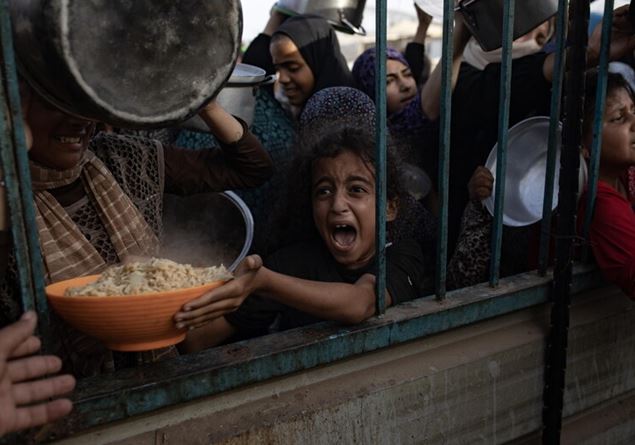There is a map that does not indicate roads or borders, but tells the places where survival is a daily race for food. It’s there “Map of the 10 (+3) main global food emergencies”presented on 9 October at the Milan Triennale from Action Against Hunger in the presence of Foreign Minister Antonio Tajani.
With this appointment the Days Against Hungera national mobilization that unites families, schools, companies, institutions, media and restaurants in a common objective: to guarantee all people the right to food and a healthy diet, in Italy and around the world.
The message is simple, but urgent: stopping hunger is possible. Together.
A widespread mobilization
The Days Against Hunger they represent an invitation to join forces against a global crisis that spares no continent. The campaign, active until the end of the year, aims to raise funds and spread awareness, supporting communities facing food emergencies and promoting paths of lasting autonomy and dignity.
The first appointment is precisely the one in Milan, dedicated to the presentation of the Global Map. It will follow, in November at the Chamber of Deputiesthe presentation of theAtlas of Hunger in Italycreated in collaboration with ISTAT and the University of Milanwhich will offer an in-depth analysis on food insecurity in our country and on the welfare policies in place. From the October 16th to December 31stfinally, the mobilization will come to life with digital content, awareness initiatives and the collaboration of numerous disseminators and content creators.
The Map, built starting from the data of Global Report on Food Crises 2025 and give it State of Food Security and Nutrition in the World 2025provides a dramatic but fundamental picture for understanding global priorities.
The countries with the largest number of people who do not have regular access to food are Nigeria, Sudan, Democratic Republic of Congo, Bangladesh, Ethiopia, Yemen, Afghanistan, Pakistan, Myanmar and Syria.
To these are added three contexts particularly affected – South Sudan, Haiti and the Gaza Strip – where a very large part of the population lives in conditions of acute hunger.
The Map is not limited to numbers: it collects direct testimonies from the fieldstories of operators and communities who work every day to rebuild food security, with shared and sustainable projects that aim to strengthen local resilience.
During the Milanese presentation, a space was also dedicated to Italian situation. Simone Garronigeneral director of Action Against Hunger Italy, e Livia CelardoISTAT researcher, illustrated the most recent data onfood insecurity in our country and on the responses co-designed together with local institutions and partners.
A theme that questions even the richest societies: access to a healthy, balanced and sustainable diet is not yet guaranteed to everyone, and the social gap grows even when faced with an empty plate.
There is a large network of people supporting the Days Against Hunger partners and businessesincluding Capgemini, Cielo e Terra, Enercom, Ferrari Trento, FIPE, Conad Foundation, De Agostini Foundation, SNAM Foundation, Metro Italia, Michelin Italiana, Sole365, Surgiva, The Fork and Ticketmaster Italia.
An alliance that demonstrates how the fight against hunger cannot be left to humanitarian organizations alone, but requires global co-responsibilitycapable of involving citizens, institutions and the productive world.


